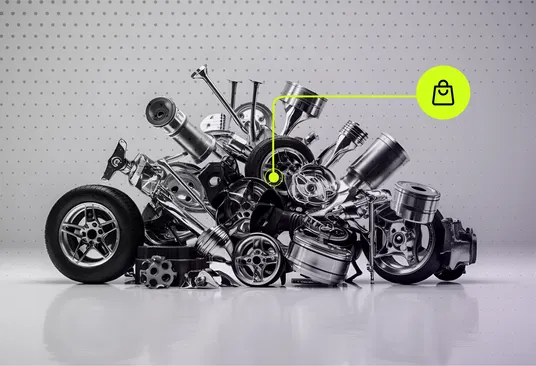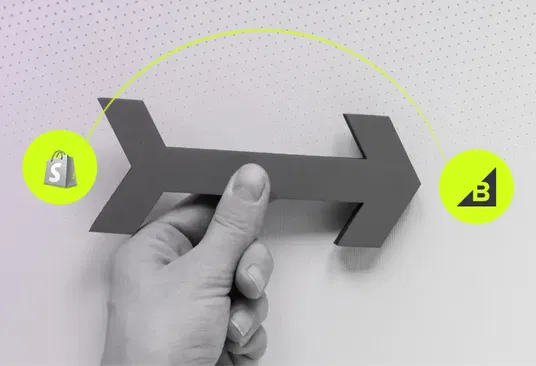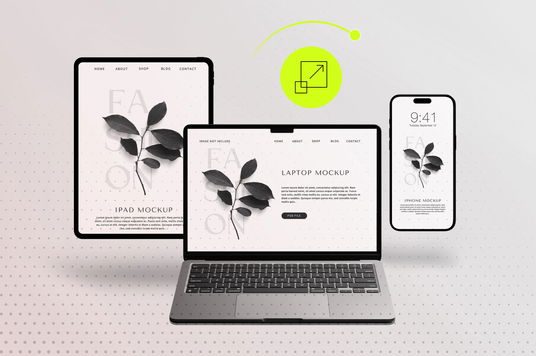Building a Car Parts eCommerce Store That Understands Vehicle Fitment

- Why Vehicle Fitment Matters in Auto Parts eCommerce
- Core Vehicle Fitment Features
- Year/Make/Model Filtering System
- VIN Decoder Integration
- Part Compatibility Validation
- Dynamic Product Filtering by Vehicle Specs
- Vehicle Database Architecture
- Optimizing User Experience
- Technical Implementation Guide
- Frequently Asked Questions
- Key Takeaways
Why Vehicle Fitment Matters in Auto Parts eCommerce
The automotive parts eCommerce industry faces a unique challenge that sets it apart from every other retail category: ensuring customers purchase parts that actually fit their specific vehicle. Unlike buying clothes or electronics, automotive parts must match exact vehicle specifications, making vehicle fitment lookup in ecommerce absolutely critical for success.
When customers buy the wrong part, the consequences extend far beyond a simple return. Wrong parts can damage vehicles, create safety hazards, and result in costly repairs. This reality makes accurate fitment validation not just a convenience feature, but a business necessity.
📊 Industry Reality: Auto parts have return rates of 15-25% primarily due to fitment issues. Stores with accurate year make model fitment filter for car parts systems reduce returns by up to 60% while increasing customer confidence and repeat purchases.
This comprehensive guide covers everything you need to build a car parts eCommerce store that understands vehicle compatibility. We'll explore essential fitment features, technical implementation strategies, and user experience optimization techniques that turn fitment complexity into competitive advantage.
"The most successful auto parts stores don't just sell parts—they solve the fundamental problem of automotive retail: ensuring every customer gets exactly the right part for their specific vehicle."
— Automotive eCommerce Research Institute
Core Vehicle Fitment Features
Building an effective part compatibility checker for automotive websites requires several interconnected systems working together seamlessly. These core features form the foundation of any successful auto parts eCommerce platform.
🔍 Year/Make/Model Selector
Hierarchical dropdown system allowing customers to select their vehicle's year, make, and model. This forms the basis for all fitment filtering.
🚗 VIN Decoder Integration
Automatic vehicle identification through VIN lookup, providing instant access to detailed vehicle specifications and compatible parts.
✅ Real-Time Compatibility Validation
Instant verification that displays only compatible parts, preventing customers from purchasing incorrect items.
📱 Mobile-Optimized Interface
Touch-friendly vehicle selection and part browsing optimized for mobile users who often shop while at auto parts stores.
🔧 Engine and Trim Specifications
Detailed filtering by engine size, transmission type, trim level, and other vehicle-specific attributes.
📋 Fitment Notes and Warnings
Clear communication about installation requirements, compatibility limitations, and special considerations.
Essential Vehicle Data Requirements
Successful vehicle fitment lookup in ecommerce depends on comprehensive vehicle data. Your system needs access to:
- Complete Vehicle Specifications: Year, make, model, trim, engine, transmission details
- Part Compatibility Matrices: Which parts fit which vehicles, including exceptions and special cases
- OEM Part Numbers: Original equipment manufacturer part numbers for cross-referencing
- Aftermarket Compatibility: Third-party part fitment data and quality ratings
- Installation Requirements: Special tools, modifications, or professional installation needs
💡 Pro Tip: Auto parts stores with comprehensive fitment data see 45% higher conversion rates and 35% fewer customer service inquiries. Our automotive car parts eCommerce development services include complete fitment system implementation.
Year/Make/Model Filtering System
The year make model fitment filter for car parts serves as the primary entry point for customers to find compatible parts. This system must be intuitive, fast, and comprehensive to provide an excellent user experience.
Hierarchical Selection Process
The most effective approach uses a cascading dropdown system that progressively narrows options:
- Year Selection: Start with vehicle year, typically covering the last 30-40 years with most recent years first
- Make Selection: Filter available makes based on selected year, showing only manufacturers active in that year
- Model Selection: Display models available for the selected year and make combination
- Trim/Engine Selection: Final specification selection for precise fitment matching
Advanced Filtering Capabilities
Beyond basic year/make/model selection, modern systems include:
| Filter Type | Purpose | Impact on Accuracy |
|---|---|---|
| Engine Size | Match parts to specific engine configurations | 85% improvement in fitment accuracy |
| Transmission Type | Ensure compatibility with manual/automatic systems | 70% reduction in transmission-related returns |
| Drive Type | Match FWD, RWD, AWD specific components | 60% improvement in drivetrain part accuracy |
| Trim Level | Account for trim-specific features and options | 40% reduction in feature-related incompatibilities |
VIN Decoder Integration
VIN decoder integration for auto parts store represents the gold standard in vehicle identification. By allowing customers to enter their Vehicle Identification Number, you can instantly access comprehensive vehicle specifications and eliminate guesswork.
VIN Decoder Benefits
Without VIN Decoder
- Manual year/make/model selection
- Potential for customer errors
- Missing trim and option details
- Higher return rates
- More customer service calls
With VIN Decoder
- Instant vehicle identification
- 100% accurate vehicle specs
- Complete trim and option data
- Reduced returns by 50%+
- Improved customer confidence
VIN Decoder Implementation
Effective VIN decoder systems provide:
- Real-Time Validation: Instant VIN format checking and validation
- Comprehensive Data: Engine, transmission, trim, options, and manufacturing details
- Error Handling: Clear messaging for invalid or unrecognized VINs
- Mobile Optimization: Easy VIN entry on mobile devices with camera scanning
- Data Caching: Store decoded information for faster repeat visits
🔧 Technical Note: VIN decoding requires integration with automotive data providers like Chrome Data, DataOne, or Mitchell1. These services provide the comprehensive vehicle databases necessary for accurate fitment matching.
Part Compatibility Validation
The part compatibility checker for automotive websites serves as the final validation layer, ensuring customers can only purchase parts that fit their specific vehicle. This system prevents costly mistakes and builds customer trust.
Multi-Layer Validation Process
- Primary Fitment Check: Verify basic year/make/model compatibility using manufacturer specifications
- Secondary Specification Matching: Cross-reference engine, transmission, and trim-specific requirements
- Exception Handling: Account for mid-year changes, special editions, and regional variations
- Installation Requirement Validation: Check for special tools, modifications, or professional installation needs
Compatibility Display Methods
Effective compatibility communication uses multiple visual and textual cues:
✅ Clear Compatibility Indicators
Green checkmarks, "Fits Your Vehicle" badges, and confidence ratings for compatible parts.
⚠️ Warning Messages
Clear alerts for parts requiring modifications, special tools, or professional installation.
❌ Incompatible Part Handling
Hide or clearly mark incompatible parts with explanations of why they don't fit.
📋 Detailed Fitment Notes
Comprehensive information about installation requirements and compatibility limitations.
Dynamic Product Filtering by Vehicle Specs
Dynamic product filtering by vehicle specs transforms the shopping experience by showing only relevant parts for the customer's specific vehicle. This approach reduces cognitive load and increases conversion rates.
Smart Filtering Implementation
Advanced filtering systems adapt based on vehicle selection:
- Category Filtering: Show only relevant part categories (e.g., hide diesel parts for gas engines)
- Brand Filtering: Display brands that manufacture parts for the selected vehicle
- Price Range Adjustment: Adjust price filters based on typical part costs for the vehicle class
- Feature Filtering: Show options relevant to vehicle features (e.g., heated seats, sunroof)
- Performance Level Filtering: Match performance parts to vehicle capabilities
Search Enhancement
Vehicle-aware search functionality improves part discovery:
| Search Type | Without Vehicle Context | With Vehicle Context |
|---|---|---|
| "brake pads" | 10,000+ generic results | 25 compatible options |
| "oil filter" | 5,000+ various filters | 12 exact fit options |
| "headlight" | 8,000+ all vehicle types | 18 compatible assemblies |
"Vehicle-specific filtering reduces search time by 75% and increases purchase confidence by 60%. Customers appreciate seeing only parts that fit their vehicle rather than wading through thousands of irrelevant options."
— Automotive eCommerce User Experience Study
Vehicle Database Architecture
The foundation of any effective fitment system is a well-structured vehicle database that can handle complex relationships between vehicles, parts, and compatibility rules.
Core Database Components
🚗 Vehicle Master Data
Complete vehicle specifications including year, make, model, trim, engine, transmission, and options.
🔧 Part Master Data
Comprehensive part information including OEM numbers, aftermarket equivalents, and specifications.
🔗 Fitment Relationships
Complex mapping between vehicles and parts, including compatibility rules and exceptions.
📋 Application Notes
Installation requirements, warnings, and special considerations for specific fitments.
Data Sources and Integration
Professional automotive databases provide the accuracy needed for reliable fitment:
- ACES (Aftermarket Catalog Exchange Standard): Industry standard for part fitment data
- PIES (Product Information Exchange Standard): Standardized product information format
- VCdb (Vehicle Configuration Database): Comprehensive vehicle specification database
- PCdb (Product Classification Database): Standardized part categorization system
💡 Integration Tip: Using industry-standard data formats ensures compatibility with supplier catalogs and reduces data maintenance overhead. Our automotive eCommerce development team specializes in ACES/PIES integration for accurate fitment systems.
Optimizing User Experience
Even the most accurate fitment system fails if customers can't use it effectively. User experience optimization focuses on making vehicle selection and part discovery intuitive and efficient.
Mobile-First Design Principles
With 65%+ of auto parts searches happening on mobile devices, mobile optimization is critical:
- Touch-Friendly Controls: Large, easy-to-tap dropdown menus and buttons
- Simplified Navigation: Streamlined vehicle selection process with minimal steps
- Fast Loading: Optimized database queries and caching for quick responses
- Offline Capability: Cache vehicle selections for users with poor connectivity
- Voice Search: Allow voice input for part searches and vehicle selection
Progressive Enhancement Strategy
Build fitment features that work for all users while providing enhanced experiences for capable devices:
- Basic Functionality: Ensure core fitment checking works without JavaScript
- Enhanced Interaction: Add dynamic filtering and real-time validation with JavaScript
- Advanced Features: Implement VIN scanning, voice search, and predictive suggestions
- Premium Experience: Add AR visualization and AI-powered recommendations
Technical Implementation Guide
Building a robust fitment system requires careful technical planning and implementation. Here's a practical approach to developing these capabilities.
API Architecture
Design your fitment system with scalable API architecture:
🔌 Vehicle Lookup API
Fast vehicle search and selection endpoints with caching for performance optimization.
🔍 Fitment Validation API
Real-time compatibility checking with detailed response data for UI display.
📊 Analytics API
Track fitment accuracy, user behavior, and system performance for continuous improvement.
🔄 Data Sync API
Automated updates from automotive data providers to maintain accuracy.
Performance Optimization
Fitment systems must be fast to maintain good user experience:
- Database Indexing: Optimize queries with proper indexing on vehicle and part tables
- Caching Strategy: Cache frequently accessed fitment data and vehicle information
- CDN Integration: Distribute vehicle images and static data globally
- Lazy Loading: Load fitment data progressively as users make selections
- Background Processing: Handle complex compatibility calculations asynchronously
⚡ Performance Target: Aim for sub-200ms response times for vehicle lookups and under 500ms for compatibility validation. Users expect instant feedback when selecting vehicles and viewing parts.
Frequently Asked Questions
1. How accurate are VIN decoders for fitment validation?
Professional VIN decoders are 95-98% accurate for basic vehicle specifications. However, they may miss aftermarket modifications, regional variations, or mid-year changes. Always provide manual override options for edge cases.
2. What's the best way to handle fitment exceptions and special cases?
Create a comprehensive exception management system that allows for manual overrides, special notes, and conditional fitments. Document all exceptions clearly and provide detailed installation notes for complex cases.
3. How do I keep fitment data current and accurate?
Use automated data feeds from professional providers like ACES/PIES databases. Supplement with customer feedback systems and regular data audits. Plan for weekly updates and immediate corrections for critical errors.
4. Should I build fitment systems in-house or use third-party solutions?
For most businesses, hybrid approaches work best. Use professional data providers for vehicle and fitment databases, but build custom interfaces and business logic. This balances accuracy with customization needs.
5. How do I handle international vehicles and markets?
International fitment requires region-specific databases and understanding of local vehicle variations. Partner with global data providers and consider separate fitment logic for different markets.
6. What's the ROI of implementing comprehensive fitment systems?
Businesses typically see 25-40% reduction in returns, 30-50% increase in conversion rates, and 60% fewer fitment-related customer service calls. The investment usually pays for itself within 6-12 months through reduced costs and increased sales.
Key Takeaways
Building a successful car parts eCommerce store requires more than just listing products—it demands sophisticated understanding of vehicle compatibility and fitment validation. The key principles for success include:
- Prioritize Accuracy: Invest in professional vehicle databases and comprehensive fitment validation
- Focus on User Experience: Make vehicle selection intuitive and part discovery effortless
- Implement Progressive Enhancement: Start with core functionality and add advanced features gradually
- Optimize for Mobile: Design fitment systems that work perfectly on mobile devices
- Plan for Scale: Build systems that can handle growth in products, vehicles, and customers
- Measure and Improve: Track fitment accuracy and user behavior to continuously optimize
The automotive parts industry presents unique challenges, but stores that solve fitment problems effectively create significant competitive advantages. Success comes from understanding that customers don't just want parts—they want confidence that those parts will fit their specific vehicle perfectly.
"The most successful auto parts eCommerce stores don't just sell parts—they eliminate the fear and uncertainty that prevents customers from buying automotive products online."
— 1Center Automotive eCommerce Team
Ready to Choose the Right Development Partner?
Building a car parts eCommerce store with accurate vehicle fitment requires specialized expertise in automotive data integration, complex database architecture, and user experience optimization. Our team has developed fitment systems for leading auto parts retailers, implementing everything from basic year/make/model filters to advanced VIN decoding and AI-powered compatibility validation.
Get Your Free Automotive eCommerce Consultation →
Or explore our comprehensive automotive car parts eCommerce development services to see how we can help your auto parts business succeed online.
About 1Center
1Center is a leading eCommerce development agency specializing in automotive and car parts retailers. Our team has implemented hundreds of vehicle fitment systems across platforms including Shopify Plus, BigCommerce, Adobe Commerce, and custom solutions. We understand the unique challenges of automotive eCommerce and create solutions that drive measurable results for auto parts businesses of all sizes.
Written byPublished July 03, 2025
1Center


